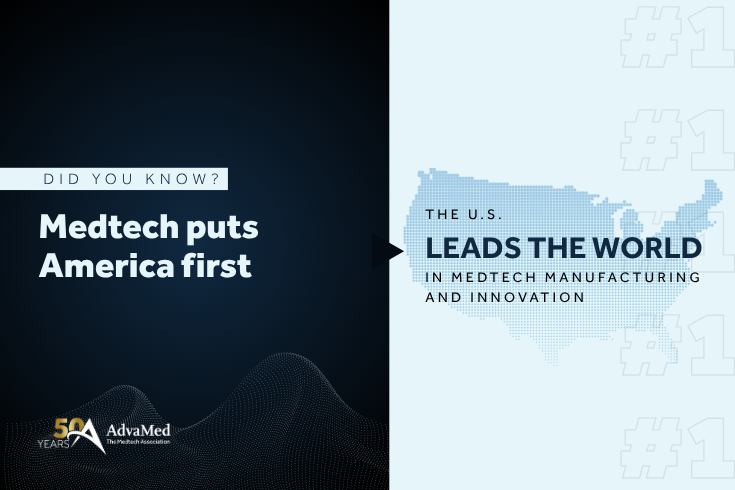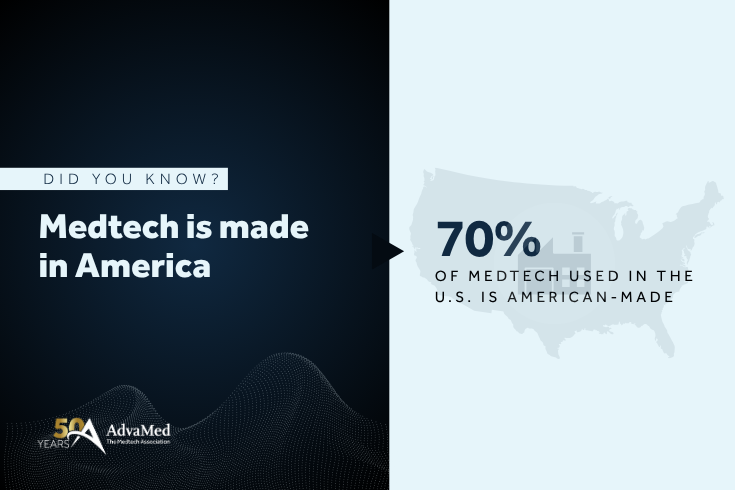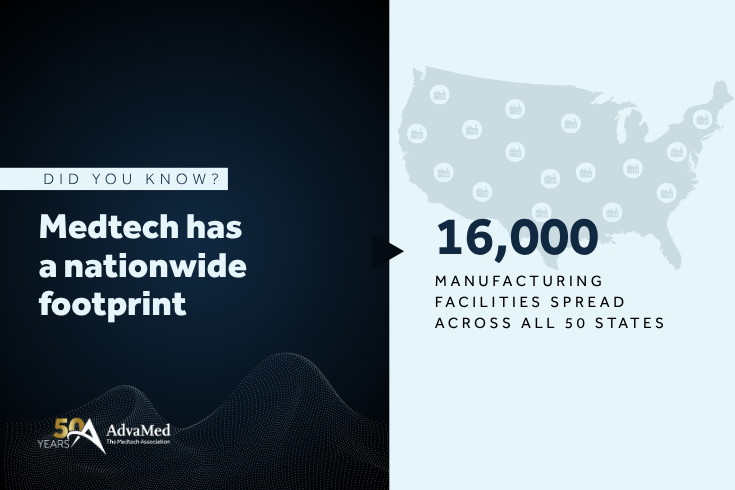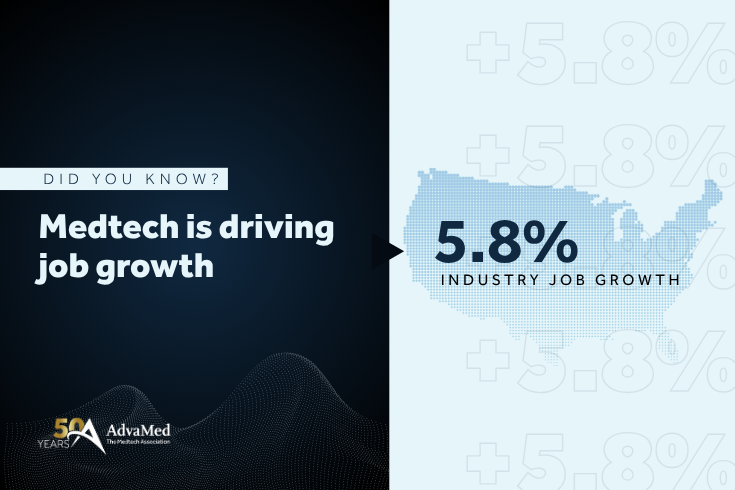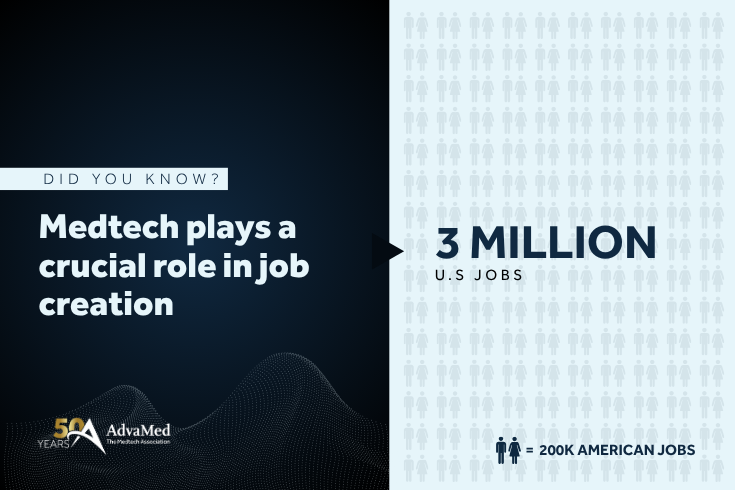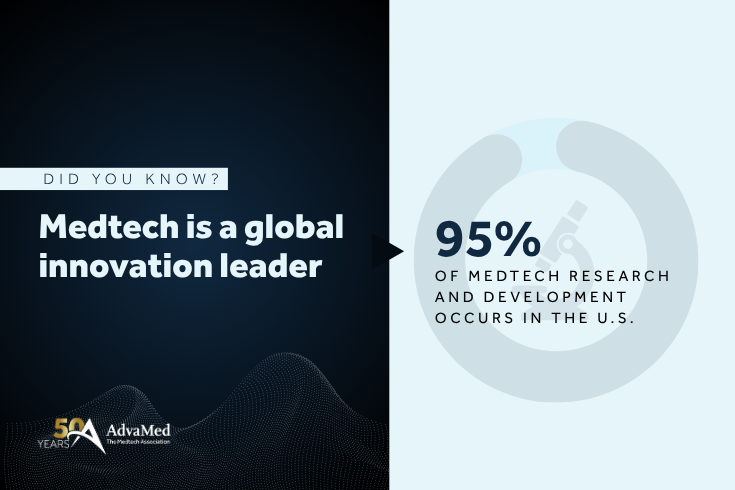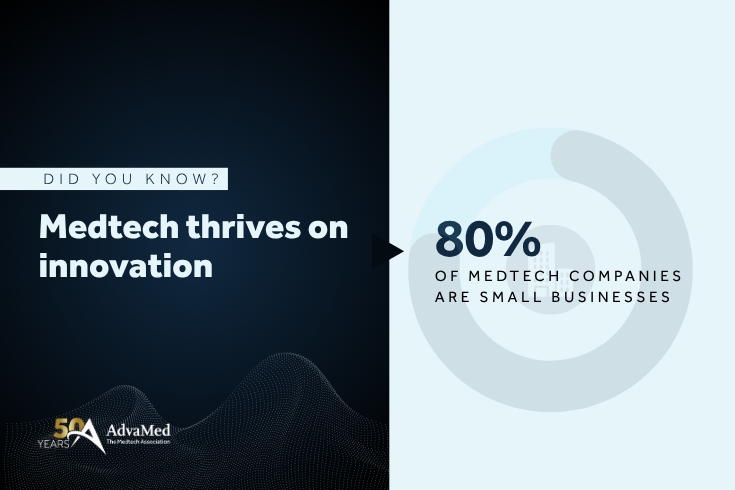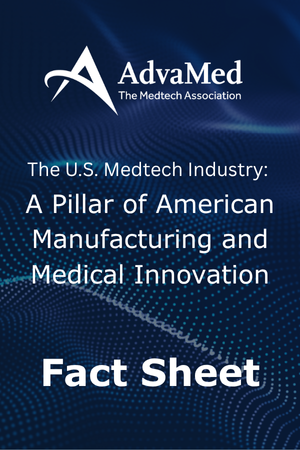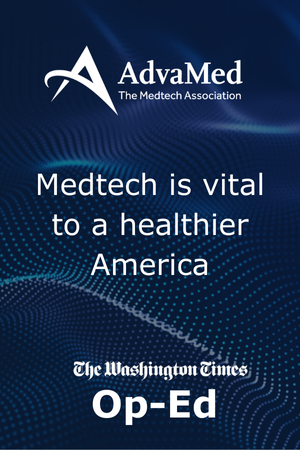
Medtech: Making Americans Healthy Again
Medtech Saves Lives, Money and Precious Time
Medtech’s Role in Making Americans Healthy Again
As the Trump Administration launches its “Make America Healthy Again” initiative, the medical technology industry stands ready, given its critical role in helping Americans improve their health. We commend the Administration for its forward-looking and patient-centric vision.
Medical technology is the backbone of health care in America, and our industry’s entire mission is—and always has been—to make people healthy again, and our companies recognize the important role federal policy plays in helping every single American to live their healthiest life.
Empowering Patients Through Health Tech Innovation
We appreciate the Administration’s recognition of the need for earlier diagnosis and intervention, and of the core principle that patients, through modern health tech innovations, can and should be empowered to take greater charge of their own health through the remarkable transparency that, for example, wearable tech provides for them and their care teams.
The Next Era of Medical Innovation is Here
This is just the beginning of a new golden age of medical innovation: AI is ushering in a revolution in early diagnosis—more accurate than ever before. The earlier most diseases are diagnosed, the less invasive, risky, time-consuming, and costly (both to the patient and the health care system overall) the treatment is likely to be. Digital health technologies are transforming the continuum of care into one in which patients themselves can take better control of their own health destinies.
Real Results, Real Impact
Medtech is driving the technologies that make America healthy:
- After all, it is tough to become healthy again without an accurate diagnosis—which is where our diagnostic testing and medical imaging sectors come in.
- And it is a lot easier—not to mention more motivating!—to become healthy again with the help of one of the most powerful technologies we have seen in decades: the “wearable.”
- The powerful tools in the hands of our skilled doctors and nurses are helping countless Americans to return to health, to work—and in in so many cases, to life.
Medical innovations don’t simply improve, transform, and save lives. They also reduce the burden on our health care system by preventing complications, shortening hospital stays, and enabling more efficient care. In an ever-changing world, medtech ensures that health care continues to evolve and meet patients’ needs with the precision care they deserve.
America Runs on Medtech: Jobs & Innovation
Medtech Jobs in the USA
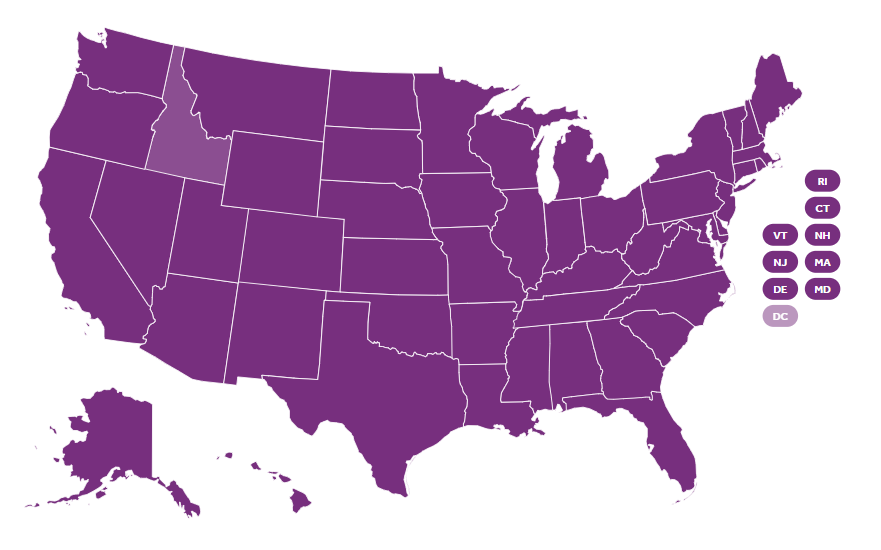
See How Medtech Powers Jobs in Your State
Use our interactive map below to explore the number of jobs supported by the medtech industry in each state. Click on a state to learn more about its contributions, employment figures, and key medtech employers shaping the future of health care.
Medtech Saves Lives
The mother whose breast cancer was diagnosed early, sparing her invasive treatment and saving her life.
The husband whose irregular heartbeat was fixed with a minor procedure in what once would have meant open-heart surgery.
The teenager with Type 1 diabetes who wears a continuous glucose monitor and integrated insulin pump, enabling freedom from painful finger sticks and better control of dangerous, life-threatening episodes.
The common denominator in these positive outcomes: medtech.

Medical advancements, including medtech-enabled diagnoses and treatments, increased life expectancy by more than five years from 1980 to 2019.

Medtech helped reduce the duration of hospital stays by 38 percent since 1980.

Medtech reduced fatalities from heart disease and stroke by 49 percent since 1990.

Screenings due to improved medtech, including advanced imaging, have helped reduce deaths from breast cancer by 43 percent since their peak in 1989; prostate cancer deaths by 53 percent since their peak in 1993; and cancer deaths overall by 32 percent since 1990.

Top Surgeries Annually (U.S.):
1.175M C-sections
1M Breast biopsies
500K Open-heart surgeries
800K Knee replacements
400K Hysterectomies

Medtech Saves Money
- Medtech spending increases at lower rates than other health care spending.
- Medtech prices grow more slowly than other types of medical spending.
- Medtech spending increased at an annual rate of 3.1 percent from 2009 to 2019, considerably lower than the 4.3 percent increase in overall health spending.
- The highly competitive nature of medtech and the lack of exclusivity agreements, unlike in certain other health industries, holds prices down.
Medtech Saves Time
Time is our most precious resource—and medtech helps us protect it.
Innovations in medical technology empower doctors and nurses to save and extend lives, giving patients more time with the people they love. Advanced tools like robotic, laparoscopic, and imaging-assisted systems make procedures faster and less invasive, often with quicker recovery times. Since the 1970s, average hospital stays have dropped from 11 to just 5 days. AI-driven solutions now support earlier, more accurate diagnoses—reducing the need for repeat visits, extra procedures, and extended treatments. Medtech innovation is saving time for patients, providers, and the entire health system.

About AdvaMed®
For 50 years, AdvaMed® has championed breakthrough technologies, global standards, and patient-first policies that improve lives, strengthen our economy, and advance health for all.
